Jalapeño peppers and cayenne peppers are both familiar to most people. But what sets them apart?
Cayenne peppers are much spicier than jalapeños. While jalapeños have a well-known sweetness behind their kick of spice, cayenne peppers don’t have a very memorable flavor. Cayenne peppers are usually used dried as a spice to add some heat to dishes, whereas jalapeños can be found pickled, cooked, or raw.
Read on to dig into the differences between these two fantastic peppers!
Comparison – Differences between jalapeño peppers and cayenne peppers
Jalapeños peppers are a common, popular pepper and are easy to pick up in most grocery stores. Cayenne peppers, on the other hand, tend to be harder to find in their fresh form, but chances are good you’ve got cayenne powder in your kitchen cabinet right now.

Let’s take a detailed look at the similarities and differences between jalapeño and cayenne peppers based on the following criteria:
- Jalapeños vs cayenne peppers heat level
- Jalapeños vs cayenne peppers flavor
- Jalapeños vs cayenne peppers texture
- Jalapeños vs cayenne peppers size and shape
- Jalapeños vs cayenne peppers nutrition
- Jalapeños vs cayenne peppers cost and availability
- Unique difficulties
- Substitutions
| Criteria | Jalepeño Pepper | Cayenne Pepper |
|---|---|---|
| Heat level | 2,000-8,000 SHU | 30,000-50,000 SHU |
| Flavor | Sweet and bright | Spicy |
| Texture | Smooth with a tough skin | Smooth |
| Size | 2-3″ | 4-10″ |
| Shape | Rounded cones | Long and slender |
| Nutrition (per 100g) | 29 Calories 144% DV Vitamin C | High in Vitamins C, A, and B6 |
| Substitutions | Serrano pepper | Serrano pepper |
Jalapeños vs cayenne peppers heat level (in Scoville heat units)
Jalapeños have an SHU rating that ranges from 2,000-8,000. Cayenne peppers come in at 30,000-50,000 SHU.
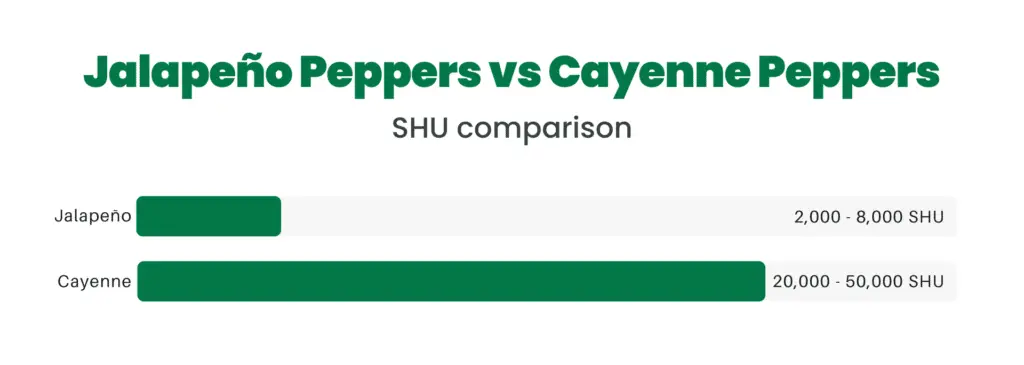
That means that a cayenne pepper can be 25 times hotter than a jalapeño!
Jalapeños vs cayenne peppers flavor
Jalapeños have a distinct sweet flavor.
Cayenne peppers just taste like, well, peppers! They don’t have much personality beyond their spice.
Jalapeños vs cayenne peppers texture
Jalapeño peppers and cayenne peppers are both smooth, generally speaking.
Jalapeños vs cayenne peppers size and shape
Jalapeño peppers are 2-3 inches long.
Cayenne peppers are 4-10 inches long.
Jalapeños vs cayenne peppers nutrition
Jalapeño peppers and cayenne peppers both have high amounts of Vitamin C and capsaicin, but cayennes have much more capsaicin than jalapeños.
Like all peppers, they’re also both low in calories.
Cost and availability
It’s pretty easy to find jalapeño peppers. Cayenne peppers are more readily available as a spice rather than raw.
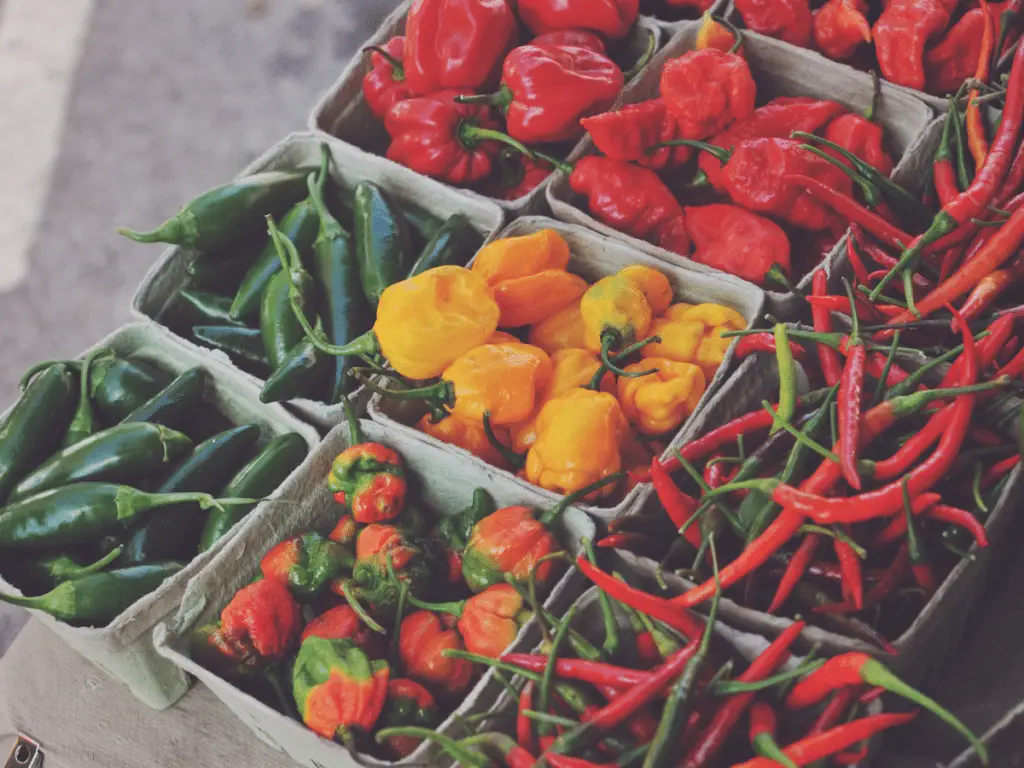
Dried cayenne pepper has a huge range in price depending on the quality and brand.
Unique difficulties
You have to be careful cooking with both jalapeños and cayenne peppers to avoid getting any spice in your eyes.
Cayenne peppers are very bland, so if you’re looking for some flavor, you should look elsewhere!
Can you substitute jalapeño peppers for cayenne peppers or vice versa?
You can’t substitute jalapeño peppers for cayenne peppers or vice versa.
Their spice levels and flavor profiles are too different.
Jalapeño peppers – a complete overview
Now let’s shift our focus to one of the world’s most popular peppers – the jalapeño!
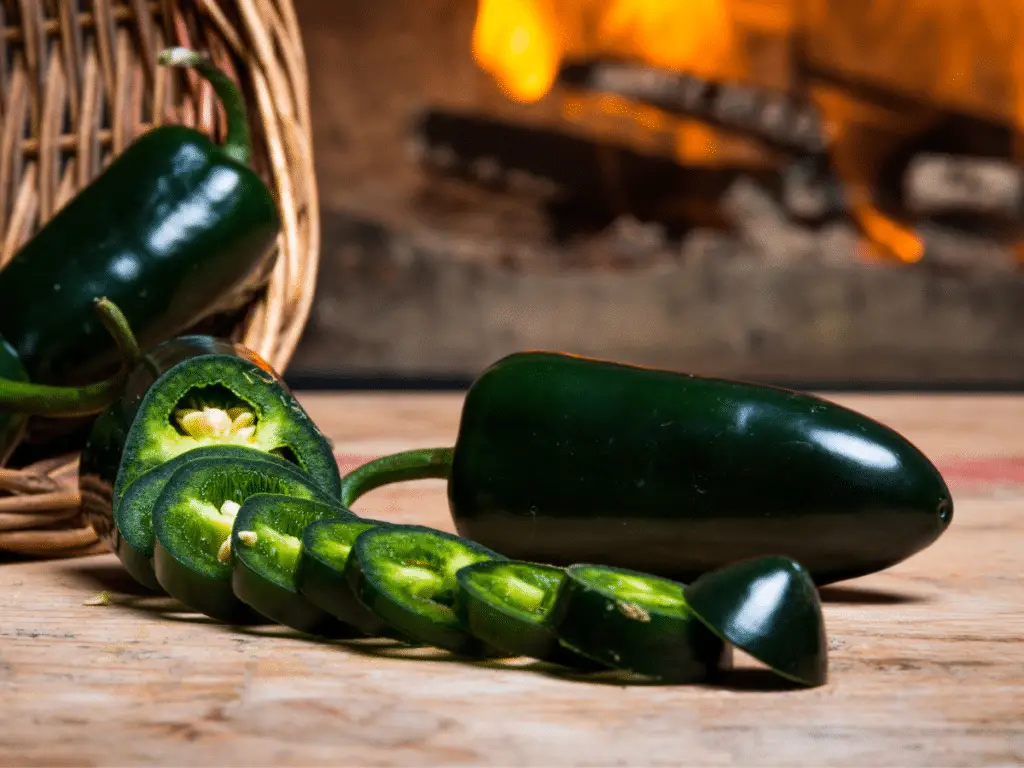
Let’s take a closer look at the jalapeño!
Heat
Jalapeños range all the way from 2,000-8,000 SHU.
Redder jalapeños are spicier, because capsaicin increases as jalapeños mature.

Unfortunately, size isn’t very indicative of how spicy your jalapeño will be. Unless you grow it yourself, it can be hard to tell until you taste it!
Flavor
Jalapeños have a strong sweet, spicy flavor.
Size, shape, and texture
Jalapeños typically are in the ballpark of 2-3 inches.
They’re cone-shaped with rounded edges and a smooth exterior.
Nutritional content and potential health benefits
One raw cup of jalapeños contains:
- 26 calories
- 177% DV Vitamin C
- 10% DV dietary fiber
- 20% DV Vitamin B6
Some potential health benefits of jalapeños are:
- Helping with weight loss
- Battling infections
- Boosting heart health
- Preventing ulcers
Cooking with jalapeño peppers
Jalapeños are popularly used in Mexican cuisine or pickled as a topping. That being said, pretty much the whole world has welcomed jalapeños into their cultures!

Jalapeños can be used to add heat and flavor to many recipes, but can also be the star of the dish. Jalapeño poppers are a popular appetizer, or you can make a couple of slices the star of your sweet and spicy cocktail!
Substitutions for jalapeño peppers
Serrano peppers are a good jalapeño pepper substitute. Mild serrano peppers have roughly the same SHU rating as spicy jalapeños. They also both taste sweet.
Freezing, drying, and preserving jalapeño peppers
If you’re a fan of pickled jalapeños, you should give it a shot at home!
Of course, you can also preserve your jalapeños by canning, freezing, or drying them.
Cayenne peppers – a complete overview
Cayenne pepper is a staple in most kitchens but chances are good you’ve never had the raw variety. Why is that?
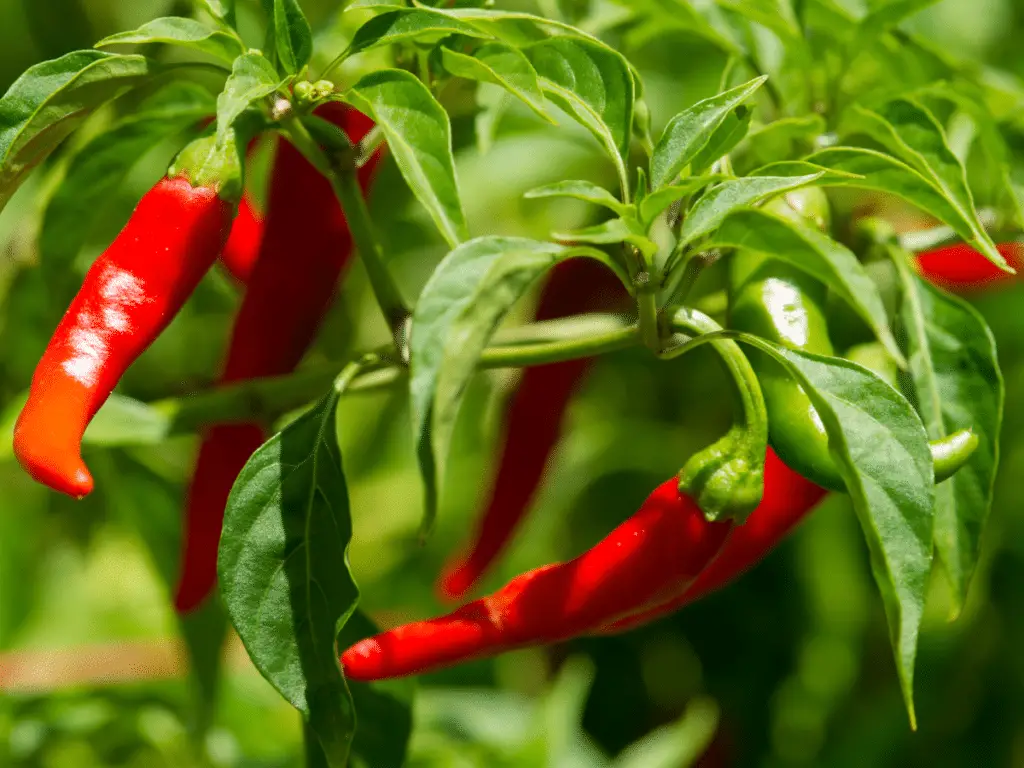
Let’s find out all about this pepper!
Heat
Cayenne peppers measure up at 30,000-50,000 SHU. Not too shabby!

Cayenne pepper powder doesn’t have a Scoville rating, but it’s worth noting that it will impart more heat (but probably less flavor) than either paprika or chili powder.
Flavor
Cayenne peppers are actually pretty bland aside from their spice, and just have a general pepper flavor to them.
Size, shape, and texture
Cayenne peppers can range anywhere from 4-10 inches long based on how mature they are and their growing conditions.
Cayenne peppers are skinny with a pointed tip. Most of them have a slight curve.
Nutritional content and potential health benefits
One fresh cayenne pepper contains:
- 72% DV Vitamin C
- 50% DV Vitamin A
Some potential health benefits of cayenne peppers include:
- Anti-cancer properties
- Heart disease(s) prevention
- Improved digestion
- Metabolism boost
- Anti-inflammatory
Cooking with cayenne peppers
Cayenne peppers can be blistered, grilled, sauteed, or roasted, but the powder form is the most common way to use it in recipes.

Overall, cayenne peppers are a bit too spicy to be used raw. Likewise, they’re too skinny to stuff.
Substitutions for cayenne peppers
While serrano peppers aren’t as spicy as cayenne peppers, they’re the most readily available substitute.
When it comes to the powder, you can easily swap it out for chili powder. Chili powder is typically made from a mix of different peppers – it may not be as hot, but it’ll likely have more flavor.
Freezing, drying, and preserving cayenne peppers
You can preserve, dry, and freeze cayenne peppers just like you can any other pepper!
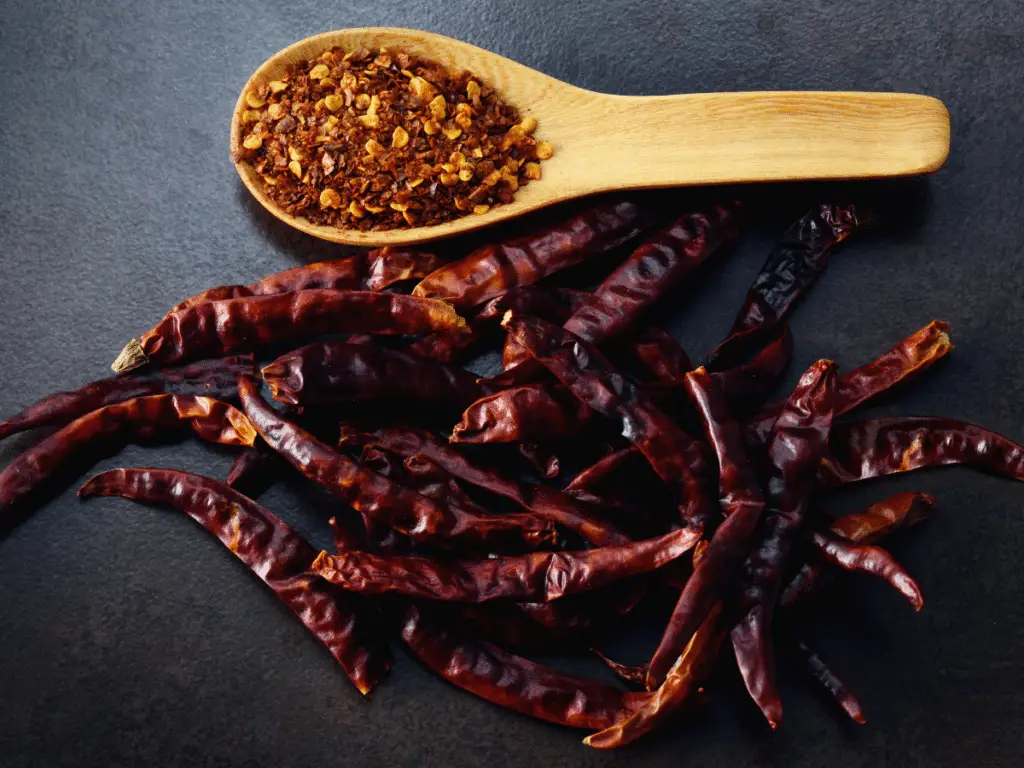
Since cayenne peppers are most commonly used dried as a spice, many people like to dry their own peppers and then grind them up to create fresh cayenne pepper!

